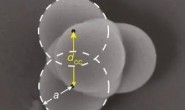近日,有朋友有文章拟投Science,需要找专业人士修改写作和英语语言,我找了一个发表过13篇Science和Nature文章的老外 (文章被引次数2.4万次),求教如何写作Science和Nature文章。毕竟,要想在Science和Nature发表文章,除了有非常创新的idea,有新意的研究结果,还需要有很好的writing。Writing不仅仅是英文语言语法问题,更重要的是文章的逻辑、文章的组织、文章的写作。比如Introduction如何写,需要写几段,每一段写什么内容,都应该有一定的章法。
下面是该教授给出的建议:
第一段: 提出一个有普遍意义的理论(broad theory),阐述为什么这个理论重要。
第二段: 详细介绍你本文要研究的科学问题;之后,读者才会知道你的研究结果是如何与“有普遍意义的理论”相联系的。
第3-5段:把现有结果按照第2段科学问题的顺序排列,让每一个结果都能够清楚地与研究假说相匹配。
最后一段:给出一个“大结论”(big conclusion);是否有“普遍意义的理论或假说”被验证或部分被验证?同时提出本研究可能的缺陷(caveats or drawbacks) ;最后给出本研究对于未来研究的意义,即下一步需要做哪些工作。
下面附上该教授给我的回复,供大家写作Science和Nature文章时参考,相信很有参考价值。
To get accepted at Science, it has to be written very concisely and clearly. Your manuscript gets bogged down in a couple places and loses its focus.
So, before I start detailed editing, I want to clarify the organization. Please rewrite it following this very specific formula:
> First paragraph: State the broad theory and why it’s important. Your first paragraph is already reasonably good, and you can leave it for now.
> Second paragraph: State precisely the questions you will address in the paper. After this, the reader will know exactly what your results will show and how they relate to the overall theory.
> Paragraphs 3-5: Present results in the same order you state the questions in paragraph 2. That is, make it clear that each result address the hypotheses posed. (The number of paragraphs should match the number of main results.)
> Final paragraph: State the big conclusion. Was the theory confirmed orrejected? (Okay if some parts were confirmed, other parts not.) Mention caveats or possible drawbacks. Then give a broad statement on implications or future work. What is needed next?
材料科学网相关阅读:
【收藏】再也不愁SCI了!学术论文常用句型
如何做出高颜值的Sci论文配图?
来源:杜彦君科学网博客。

